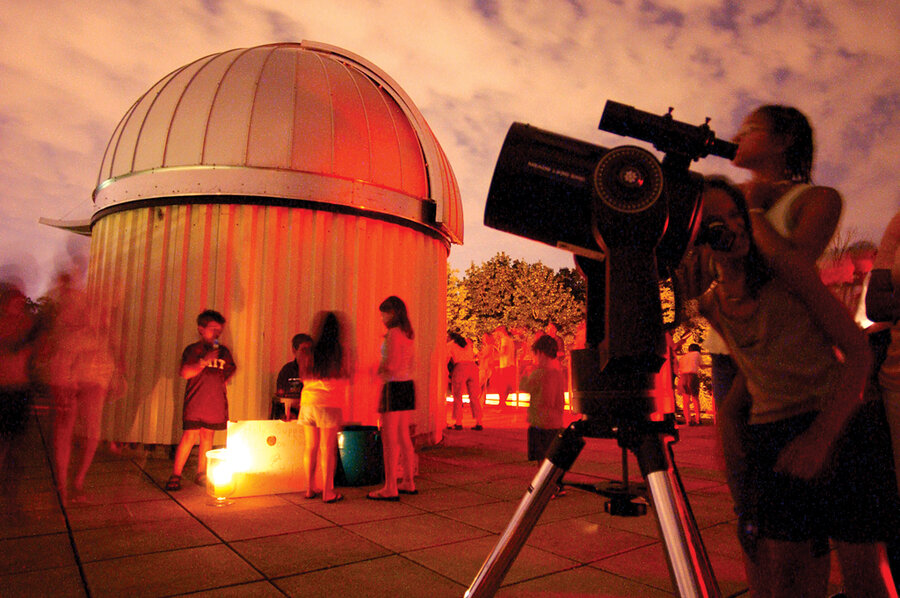Hello Mars. Goodbye sci-fi
Loading...
There are many moons in our solar system, but we think of ours as “the moon.” It waxes and wanes on schedule. It’s as reliable as the sun. The planets are different. They trace mysterious paths through the night sky, lining up, separating, shining brightly, disappearing.
And no planet has intrigued us like Mars – far enough away to be an enigma, but sometimes tantalizingly close. Mars has always straddled fiction and fact. Named for a Roman god, about Earth-size, possibly habitable (friend? foe?), it has, until recently, been just beyond the range of exploration.
As technology has advanced, so has our knowledge of Mars, but not always in myth-busting ways. In 1877, for instance, astronomer Giovanni Schiaparelli observed what he thought were channels on Mars – “canali” – which, mistranslated as “canals,” gave rise to theories about a Martian civilization capable of engineering and agriculture. That set off a boom, in books and movies about journeys to Mars and close encounters with Martians. If nothing else, Mars fiction whetted our appetites for exploration. Science, after all, starts with speculation, though it can’t end there. As the philosopher of science Roger Bacon put it, the “strongest arguments prove nothing so long as the conclusions are not verified by experience.”
If, like me, you were a kid at the start of the space race, you’ll recall the Soviet Union throwing probe after probe at the planet in the early 1960s. All failed. NASA had its flubs as well. So many missions to Mars broke down that scientists talked of a “Mars curse.” There wasn’t one, of course, but sending a vessel to the red planet has long tested the limits of engineering.
It wasn’t until 1964 that Mariner 4 got close enough to take black-and-white photos of a crater-pocked surface and transmit a smattering of data about the planet’s atmosphere and surface temperature. Those first images were more a proof that we’d tagged the planet than a trove of new knowledge.
In a Monitor cover story, Pete Spotts assesses where we are in our short but increasingly productive encounter with Mars. A great stride occurred last year when the Mars Curiosity rover safely landed in Gale Crater and started its work. Curiosity promises unprecedented information about Martian chemistry and perhaps Martian life. More than that, however, Curiosity is giving us a National Geographic-type image bank, linking this other world to ours in high definition.
Our ancestors drew maps of the heavens and spun fables about what was out there. Soothsayers, astrologers, and philosophers named celestial bodies for mythological gods, attributed powers to stars and constellations, and tried to reconcile the cosmos with theology. Mystery still exists beyond the range of radio telescopes. But step by step, Mars is shedding its cloak of science fiction.
As our atlases and databases of the planet grow richer, Mars becomes part of our world. We’re increasingly there with our robotic extensions. Eventually, we’ll go there ourselves. And as the great science-fiction author Ray Bradbury observed, when we are on the planet, looking closely, we will inevitably see Martians.
“The Martians were there – in the canal – reflected in the water,” he wrote in “The Martian Chronicles” (1950). “The Martians stared back up at them for a long, long silent time from the rippling water....”
John Yemma is editor of the Monitor.








